We have covered take-down and folding 22 LR rifles suitable for a bug-out bag, camping gear duffle bag, or backpack, several times, starting in the August 2012 issue to the latest in the September 2020 issue. After the 2020 article, we received a bunch of e-mails about including the Henry AR-7 and Chiappa Little Badger. There were also a few e-mails about the Marlin Papoose, a take-down 22 LR first introduced in 1986.
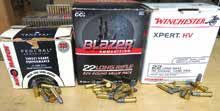
So we are back with these three additional rifles that all offer light weight and the ability to be disassembled or be collapsed and stowed in a smaller package. The 22 LR rifle can be made lightweight, and it allows you to easily carry more rounds compared to centerfire-caliber cartridges. A rimfire also can be used to hunt and in self defense, and the 22 LR round offers minimal recoil and low muzzle blast. This time, these rifles are either a take-down style (AR-7 and Papoose) or a folder (Little Badger) for smaller storage. We again looked at ease of disassembling or collapsing the rifle, ease of use, ease of loading the magazine, weight, ease in field stripping for cleaning, and finally accuracy.
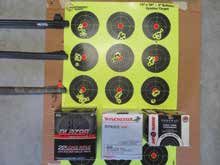
First the similarities. They are all lightweight, weighing in around 3 pounds. The Marlin came with a padded, rectangular nylon bag, which was the largest storage method. The Chiappa comes with a thin unpadded triangular pouch shaped like a pizza slice. The Henry doesn’t need a bag, case, or a pouch, because all its components fit inside the rifle stock. With all the components nested inside the stock and the butt pad as a lid, the AR-7 will float. We like the way the AR-7 stows in its own stock like Tupperware. All three were fast to get into action, with the Chiappa being the fastest. However, a follow-up shot with it was obviously slow. The Marlin and Henry required lots of tightening down of barrel nuts, which made us feel like a spy in an old movie as we assembled the rifles. The Henry took the longest to get into action because the action needs to screwed into the stock and then the barrel screwed on to the action. With the Marlin, all you need to do is screw in the barrel. They were also accurate at 15 yards, with many groups resembling one ragged hole. These rifles performed without exception. The cost of the rifles ranged from about $179 up to $457.
How We Tested
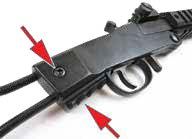
Though we collected range data using iron sights, you can mount an optic or red dot on any of these rifles. When you do that, the gun becomes less of a survival rifle since neither the Henry nor the Chiappa can be stowed as originally designed. You could add a scope to the Marlin since the case is so large. We did remove the barrel after extended shooting to see how hot they were and if the threads on the locking nuts seized, but we found we could disassemble and reassemble with no issues. Sure, the barrels were warm, but they were easier to manipulate with bare hands. Also, there was no point-of-impact shift in the Marlin and the Henry between assemblies because the sights are attached to the barrels.
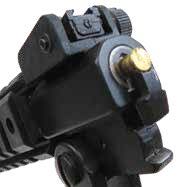
We tried three different bullet weights: 36-grain Winchester Xpert HV, 38-grain CCI Blazer, and 40-grain Federal AutoMatch Target. We tested accuracy at 15 yards, and as if we were in the field, we used our range bag as a rest and found all rifles to be quite accurate. In fact, we shot many groups that had all the holes touching. We also fired the rifles off hand at 8-inch paper plates at 25 yards. We fired for speed with the Marlin and Henry, and we fired as fast as we could with the single-shot Chiappa. Long story short, the paper plates did not pose a threat. The aperture sights on the Chiappa and Henry were fast on target, and the U-notch steel rear and ramp front sights on the Marlin were a hair slower. We had one failure to feed with the Marlin at the onset, but both semi-autos chewed through ammo. We also mixed up cartridges in the magazines to see if we could trip them up. Both the Henry and Marlin performed flawlessly.
Because these rifles are designed to be disassembled for compact storage, there are some idiosyncrasies. We think any one of these would be a good bug out/survival rifle, but the Henry would be Our Pick. Here’s why.
Gun Tests Grade: A (BEST BUY)
$179
The Little Badger is a minimalist rifle stripped of unnecessary features and options in an effort to make the rifle light weight, easy to store, and easy to use. In our opinion, the Little Badger does all these things well. It weighs a hair under 3 pounds, folds down to 16.5 inches in length, and because it is a break-action with a manual hammer, it is easy to use. The entire rifle is just an action and barrel with a wire stock.
| Action Type | Break-action single shot, hammer fired |
| Overall Length | 31.0 in. |
| Overall Length Disassembled | 17.5 in. |
| Barrel Length/Twist Rate | 16.5 in.; 1:16 RH twist |
| Overall Height | 6.5 in. |
| Weight Unloaded | 2.9 lbs. |
| Weight Loaded | 3.0 lbs. |
| Sight Radius | 14.5 in. |
| Barrel | Blued steel |
| Receiver | Blue-anodized alloy |
| Buttstock | Steel wire, serrated plastic buttpad |
| Buttstock LOP | 12.5 in. |
| Magazine | NA |
| Front Sight | Fixed M1 style |
| Rear Sight | Adj. M1 style |
| Trigger-Pull Weight | 3.7 lbs. |
| Safety | Half-cock hammer |
| Warranty | 1-year limited |
| Telephone | (937) 835-5000 |
| Website | ChiappaFirearms.com |
| Made In | Italy |
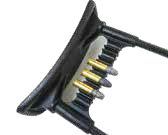
Shouldering the Chiappa, you soon realize the dual meaning of minimalist with this rifle. The overall length is 32 inches. The pistol grip area is a slight extension of the receiver with a bit of plastic Picatinny-style rail behind the trigger guard. The rail does not have sharp edges and provides plenty of gripping texture. The wire stock had a factory-adjusted length of pull of 12.5 inches, so it feels small. You can adjust the stock length via a Torx screw in the rear of the receiver. Just loosen the Torx screw and pull the stock further out of the receiver and re-tighten. A cheek weld on the wire stock is hard to do unless you hold the rifle high on your shoulder. We noticed that we could not lean our head too close to the action because we ran out of stock comb. The serrated plastic buttplate is slick enough to get to the shoulder fast with no friction. A plastic cartridge holder that allows you to store six rounds on each side of the stock is built into the butt, for a total of 12 rounds you can carry on board. We thought the cartridges were held in place too lightly and could fall out if the rifle were accidentally dropped on the ground or pulled through brush.
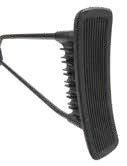
The 16.5-inch barrel is threaded at the muzzle. We like this feature. The break-action design can be very quiet to operate manually. The sights are M1 carbine-style sights with a winged front post and adjustable rear aperture. The sights are made of plastic to reduce weight. There is a knob to adjust windage, and elevation is adjusted by sliding the aperture up and down into four possible positions. We like these sights a lot, and they are fast on target and easy to use. Steel sights would be sturdier but would add weight. The abbreviated fore end is also plastic with Picatinny-style rails at the 12, 3, 6 and 9 o’clock positions. You can mount a red dot or perhaps a tactical light/laser on the rail. Remember to include extra batteries and mounting tools in your go-bag kit to manage the maintenance on the optic and light.

To open the action, press backward on the opening lever just forward of the trigger guard and the action pops open. The action uses an extractor to lift up the spent case, and there is plenty of room to load cartridges. Close the action and thumb back the hammer to make ready to fire. There is an automatic safety build into the mechanism. When the hammer is not cocked, the trigger is automatically blocked, and when you open the action, the hammer is automatically engaging the safety and blocking the trigger. This means the Little Badger can safely be carried with a round in the chamber.
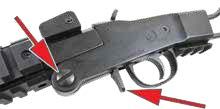
Going hot, we found the hammer was wide and easy to thumb back. The hammer spur had fine serrations, we would have liked the serrations coarser for a better grip. The sights are by no means precision units, but they give a good sight picture and were properly regulated so we did not need to adjust them. We had no issues operating the Little Badger. It ran well and our best group with 40-grain lead roundnose Federal Auto Match ammo measured 0.47 inches for five shots at 15 yards. The 36-grain hollow-point Winchester Xpert high-velocity ammo came in second with a 0.49-inch group. And last, the 38-grain LRN CCI Blazer ammo gave us a best group of 0.51 inches.
The trigger pull was 3.7 pounds and was crisp. That helped us with accuracy. Looking at the data, we also discovered the Chiappa produced the most velocity and energy, likely due to its fixed-breech action type. The pouch is lightweight canvas and gives the Little Badger a safe place to be when folded, meaning it helps to keep the breech free of debris, in lieu of just stashing the rifle in a pack or duffle bag. The pouch has straps if you want to wear it like a knapsack and carry the rifle on your back.
Our Team Said: The Little Badger fits the bill as a survival rifle. In fact we think this is also a great utilitarian rifle to keep handy to dispatch pests. The small size also makes this a good rifle to teach children shooting skills. For the cost, the Little Badger is hard to beat for a SHTF rifle.
22 Long Rifle Range Data
| Winchester Xpert HV 36-grain HP | Henry AR-7 | Chiappa Little Badger | Marlin 70P Papoose |
| Average Velocity | 1186 fps | 1266 fps | 1255 fps |
| Muzzle Energy | 112 ft.-lbs. | 128 ft.-lbs. | 126 ft.-lbs. |
| Smallest Group | 0.46 in. | 0.49 in. | 0.32 in. |
| Average Group | 0.53 in. | 0.61 in. | 0.47 in. |
| Federal Auto Match 40-grain LRN | Henry AR-7 | Chiappa Little Badger | Marlin 70P Papoose |
| Average Velocity | 1113 fps | 1222 fps | 1149 fps |
| Muzzle Energy | 110 ft.-lbs. | 133 ft.-lbs. | 115 ft.-lbs. |
| Smallest Group | 0.32 in. | 0.47 in. | 0.52 in. |
| Average Group | 0.34 in. | 0.55 in. | 0.56 in. |
| CCI Blazer 38-grain LRN | Henry AR-7 | Chiappa Little Badger | Marlin 70P Papoose |
| Average Velocity | 1207 fps | 1213 fps | 1249 fps |
| Muzzle Energy | 123 ft.-lbs. | 124 ft.-lbs. | 132 ft.-lbs. |
| Smallest Group | 0.69 in. | 0.51 in. | 0.58 in. |
| Average Group | 0.75 in. | 0.57 in. | 0.72 in. |




























i chiappa little badger. I would like improve it .